Related Research Articles
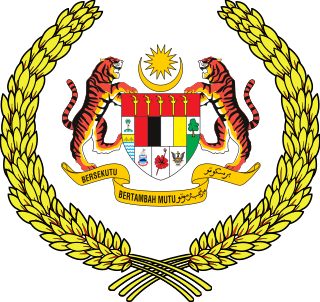
The Yang di-Pertuan Agong, unofficially known as the king of Malaysia, is the constitutional monarch and head of state of Malaysia. The office was established in 1957, when the Federation of Malaya gained independence from the United Kingdom. The Yang di-Pertuan Agong is elected by the Conference of Rulers, comprising the nine rulers of the Malay states, with the office de facto rotated between them, making Malaysia one of the world's few elective monarchies.

The Raja Permaisuri Agong, also known as the Paramount Consort and also unofficially as the Queen of Malaysia, is the consort of the Yang di-Pertuan Agong, the elected, constitutional federal monarch of Malaysia.

Al-Mu’tassimu Billahi Muhibbuddin Sultan Abdul Halim Mu'adzam Shah ibni Almarhum Sultan Badlishah was the 28th Sultan of Kedah from 1958 until his death in 2017, and served twice as the Yang di-Pertuan Agong from 1970 to 1975 and from 2011 to 2016. He was the first and only ruler to reign as Yang di-Pertuan Agong twice, as well as the oldest elected to the office. Prior to his death, he was the second longest-reigning living monarch in the world after Queen Elizabeth II of the United Kingdom.

Tuanku Sir Abdul Rahman ibni Almarhum Tuanku Muhammad was Yang di-Pertuan Besar of Negeri Sembilan from 1933, and the first Yang di-Pertuan Agong of the Federation of Malaya from 1957, until his death in 1960.
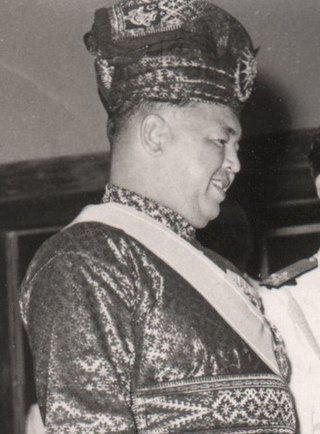
Tuanku Sir Syed Harun Putra ibni Almarhum Syed Hassan Jamalullail was the Raja of Perlis from 1945 until his death in 2000, and the third Yang di-Pertuan Agong, from 1960 to 1965.
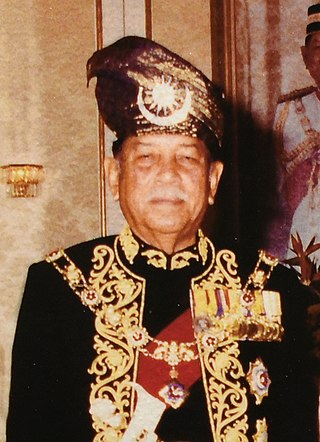
Tuanku Ja’afar ibni Almarhum Tuanku Abdul Rahman was Yang Di-Pertuan Besar of Negeri Sembilan from 1967 until his death in 2008, and the tenth Yang di-Pertuan Agong, from 1994 to 1999.
Raja Permaisuri Tuanku Bainun is the former Raja Permaisuri of Perak. She was also the ninth Raja Permaisuri Agong of Malaysia and historically the first commoner ever to be installed as the Raja Permaisuri Agong. She is the widow of the late Sultan Azlan Shah and the mother of the incumbent Sultan Nazrin Shah. She is now styled as Yang Maha Mulia Raja Permaisuri Tuanku Bainun.

The Royal Museum along Jalan Istana was the former National Palace and former residence of the Yang di-Pertuan Agong of Malaysia. It stands on a 13-acre (50,000 m2) site, located on a commanding position on the slope of a hill of Bukit Petaling overlooking the Klang River, along Jalan Syed Putra.

The Sultan of Perak is one of the oldest hereditary seats among the Malay states.

Tuanku Tengku Fauziah binti Almarhum Tengku Abdul Rashid is the current Raja Perempuan of Perlis. She also served as the Raja Permaisuri Agong from 13 December 2001 to 12 December 2006.
The regalia of Malaysia includes all the items which are deemed sacred and symbolic of the supremacy and authority of the Yang di-Pertuan Agong or the Supreme King of Malaysia and his consort, the Raja Permaisuri Agong. The installation of the Supreme King is a very special ceremony. Only on this particular day are the masses able to see his regalia. Several of these are Malaysian National Treasures since 2009.

Tuanku Sir Muhammad Shah ibni Almarhum Tuanku Antah was the seventh Yamtuan Besar of Seri Menanti, and ruled from 1888 to 1933. During his reign, Negeri Sembilan came under British protection in 1889 and became a Federated Malay State in 1895.

Al-Sultan Abdullah Ri'ayatuddin Al-Mustafa Billah Shah ibni Almarhum Sultan Haji Ahmad Shah Al-Musta'in Billah is the Sultan of Pahang since ascending to the throne following the abdication of his father in 2019. He was the sixteenth Yang di-Pertuan Agong, from 2019 to 2024, being sworn in just a few weeks after ascending to the throne as Sultan of Pahang.

The Istana Negara is the official residence of the Yang di-Pertuan Agong. It is located along Jalan Tuanku Abdul Halim near Taman Duta, northwestern Kuala Lumpur. The palace opened in 2011 and replaced the old Istana Negara which was located at a different compound in central Kuala Lumpur.
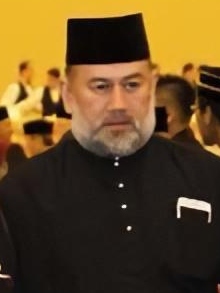
Sultan Muhammad V is the 29th Sultan of Kelantan since ascending to the throne in 2010. He previously reigned as the fifteenth Yang di-Pertuan Agong of Malaysia from 2016 until his abdication in 2019.
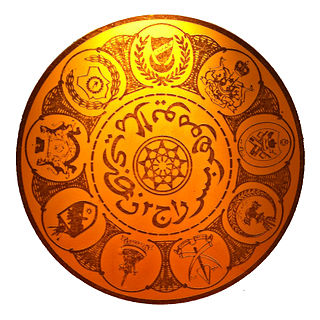
The monarchies of Malaysia exist in each of the nine Malay states under the constitutional monarchy system as practised in Malaysia. The political system of Malaysia is based on the Westminster parliamentary system in combination with features of a federation.
Coronations in Asia in the strict sense are and historically were rare, as only a few monarchies, primarily in Western Asia, ever adopted the concept that the placement of a crown symbolised the monarch's investiture. Instead, most monarchies in Asia used a form of acclamation or enthronement ceremony, in which the monarch formally ascends to the throne, and may be presented with certain regalia, and may receive homage from his or her subjects. This article covers both coronations and enthronement.
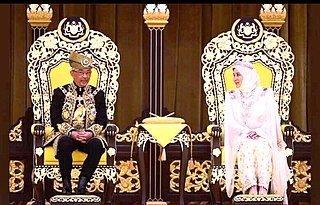
The installation of Al-Sultan Abdullah Ri'ayatuddin Al-Mustafa Billah Shah ibni Almarhum Sultan Haji Ahmad Shah Al-Musta'in Billah as the sixteenth Yang di-Pertuan Agong of Malaysia took place in a Malay Royal Ceremony at the Balairong Seri, Istana Negara, Kuala Lumpur on Tuesday, 30 July 2019 at 10 a.m. He was elected earlier by the Malay Rulers in the 251st Special Meeting of Conference of Rulers which was held at Istana Negara on 24 January 2019. The meeting was held upon the abdication of the previous Yang di-Pertuan Agong, Sultan Muhammad V of Kelantan who abdicated from his post on 6 January 2019. Abdullah held the position for a period of 5 years beginning on 31 January 2019.
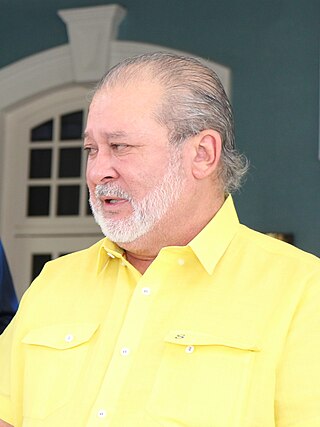
The installation of Sultan Ibrahim as the 17th Yang di-Pertuan Agong took place on 20 July 2024, a few months after Ibrahim ascended the throne on 31 January 2024 at Balairung Seri, Istana Negara, Kuala Lumpur. During the ceremony, the new Agong recited his Oath of Installation and gave his first speech from the Throne. Ibrahim was elected by the Malay Rulers in the 263rd Special Meeting of the Conference of Rulers, held at Istana Negara on 27 October 2023. The previous Agong, Al-Sultan Abdullah Ri'ayatuddin Al-Mustafa Billah Shah, ended his five-year reign on 30 January 2024.
References
- 1 2 3 4 5 Syed Mohamed Sharer, Sharifah Nur Shahrizad (23 April 2017). "Istana Negara Siap Sedia Untuk Pertabalan Yang di-Pertuan Agong Ke-15". BERNAMA. Retrieved 23 April 2017.[ permanent dead link ]